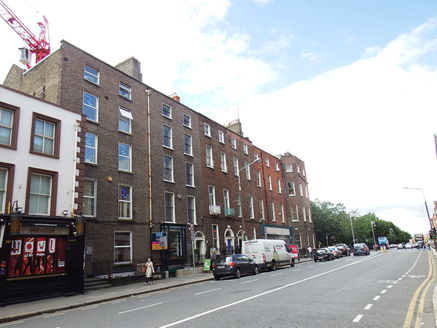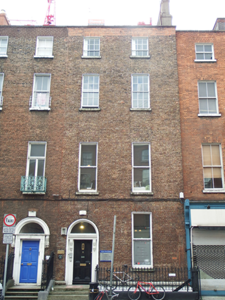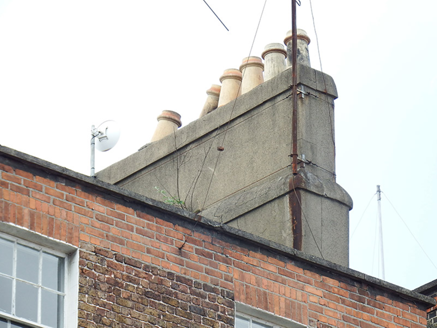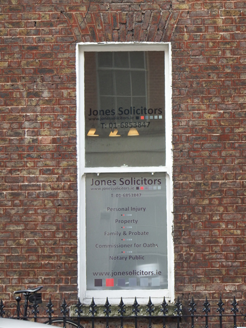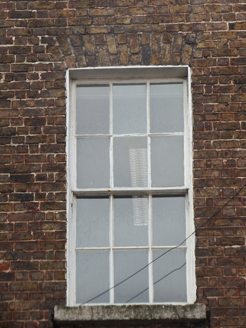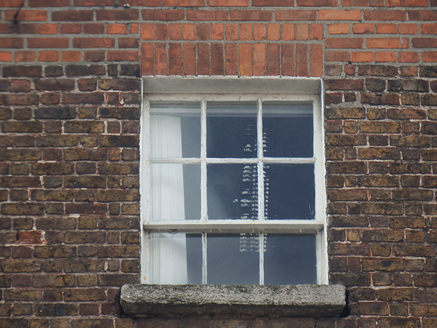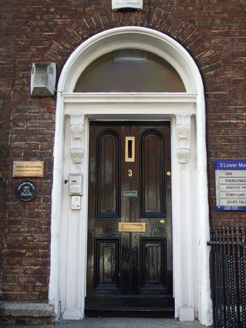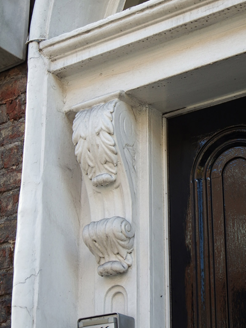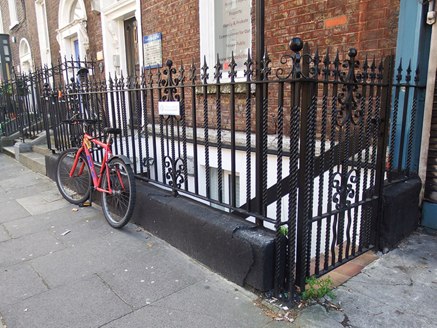Survey Data
Reg No
50100519
Rating
Regional
Categories of Special Interest
Architectural, Artistic
Original Use
House
In Use As
Office
Date
1810 - 1830
Coordinates
316885, 233527
Date Recorded
28/07/2016
Date Updated
--/--/--
Description
Attached two-bay four-storey house former house over basement, built c. 1820. Now in use as offices. L-plan pitched slate roof to front and east end of rear, behind rebuilt red brick parapet with masonry coping hipped to east end, having further pitched rear roof to west end of rear, parallel to street and hipped to east end. Shouldered rendered chimneystack to west party wall with clay pots. Concealed rainwater goods. Flemish bond buff brick walling, wigged and colour-washed to lower floors on granite plinth course over painted rendered walling to basement; rendered walling to rear. Square-headed window openings, diminishing in height to upper floors, having brick voussoirs, rendered reveals and granite sills. Replacement uPVC windows to basement; timber sliding sash windows elsewhere, early six-over-six pane to second floor and six-over-three pane to top floor, all without horns, and largely replacement one-over-one pane with horns otherwise; apparently timber sash windows to rear with nine-over-six and eight-over-eight pane arrangements. Round-headed door opening with moulded reveals, recessed surround comprising round-headed panelled pilasters, stiff-leaf consoles, lintel cornice, plain fanlight and four-panel timber door with beaded muntin and brass furniture. Replacement concrete entrance platform with three steps to street. Basement area enclosed by replacement decorative cast-iron railings with barley-twist uprights having pike-head finials and other details on painted masonry plinth. Replacement timber panelled door beneath entrance platform, accessed by tiled masonry steps.
Appraisal
A modest early nineteenth-century Georgian house. Although there has been some insertion of replacement fabric, principally the lower windows, it displays elegant proportions, a graded fenestration pattern typical of the period and wigged pointing. Relatively well retained, it is a significant component of the remaining Georgian streetscape character of Mount Street Lower. Its doorcase and intact setting details add interest and decorative detail to the streetscape. The street generally has been heavily marginalized by late twentieth-century development. Initial approval to open Mount Street Lower was obtained from the Wide Streets Commissioners in 1791, with the principal developers, Crosthwaite and Grant, having purchased land from Samuel Sproule. Although their building efforts were praised in 1796, building was halted until the early nineteenth century due to recession, and progressed slowly with only 29 houses completed by 1834.
